Interesting facts about fireworks

Fireworks are one of the most spectacular outdoor shows. They produce amazing bursts of colors that take a variety of shapes.
The word “firework” comes from the Greek word pyrotechnics, which means, very appropriately, “fire art” or “fire skill”; there’s certainly no shortage of art and skill in modern firework displays!
The earliest forms of such pyrotechnics can be traced to around 2,000 years ago in China. During the Han Dynasty in 200 B.C., people are said to have roasted bamboo stalks until they would turn black and sizzle, and the air inside the hollow stalks would explode. “Baozhu” is a Mandarin word for firecracker that translates directly to “exploding bamboo.”
At some point between 600 and 900 A.D., Chinese alchemists—perhaps hoping to discover an elixir for immortality—mixed together saltpeter (potassium nitrate, then a common kitchen seasoning), charcoal, sulfur and other ingredients, unwittingly yielding an early form of gunpowder. The Chinese began stuffing the volatile substance into bamboo shoots that were then thrown into the fire to produce a loud blast. The first fireworks were born.
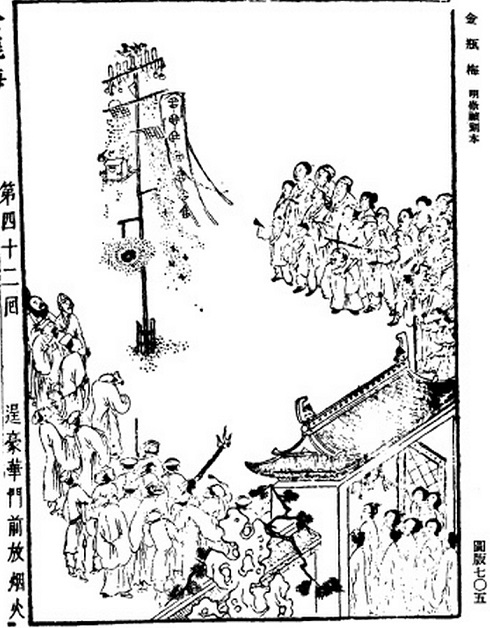
As the ingredients for gunpowder spread to the West after the Silk Road opened up trade and the Mongols made their way to Europe in the 13th century, so did fireworks.
In 1377 fireworks accompanied a religious mystery play by the bishop’s palace in Vicenza, and were soon used to add sparks to figures of doves, representing the Holy Spirit, or angels, made to ascend and descend from the heavens on ropes.
The first recorded fireworks in England were at the wedding of King Henry VII to Elizabeth of York in 1486. Queen Elizabeth was so fascinated with fireworks that she created an honorary title, “Fire Master of England” for the individual who created the best fireworks.
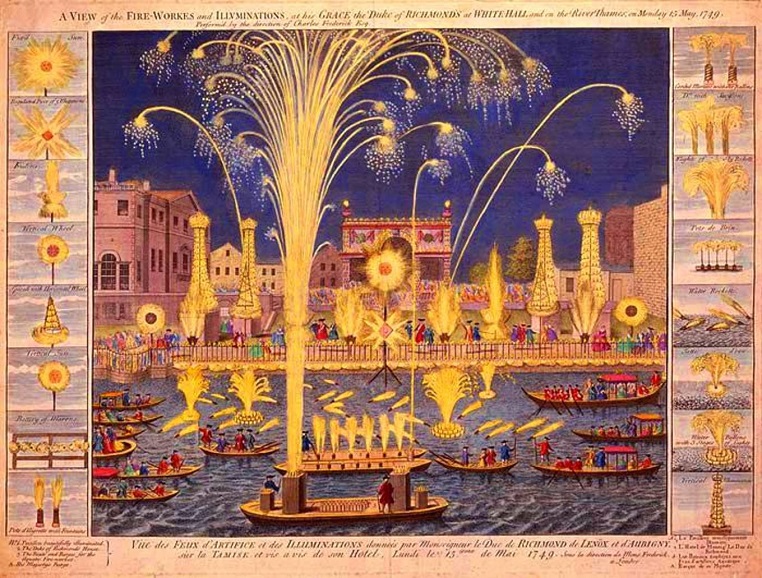
By the time of the Renaissance (14th-17th century), pyrotechnic schools were training fireworks artists across Europe, particularly in Italy, which became famous for its elaborate and colorful displays.
It was the Italians who in the 1830s became the first to incorporate trace amounts of metals and other additives, creating the bright, multihued sparks and sunbursts seen in contemporary fireworks shows. For example, calcium produces the color orange, sodium makes yellow, and barium makes green.
Fireworks become popular in the United States during the 19th century, initially as a way of celebrating Independence Day on July 4th. The cities of Boston and Philadelphia both included fireworks displays as part of the celebrations of Independence Day in 1777.
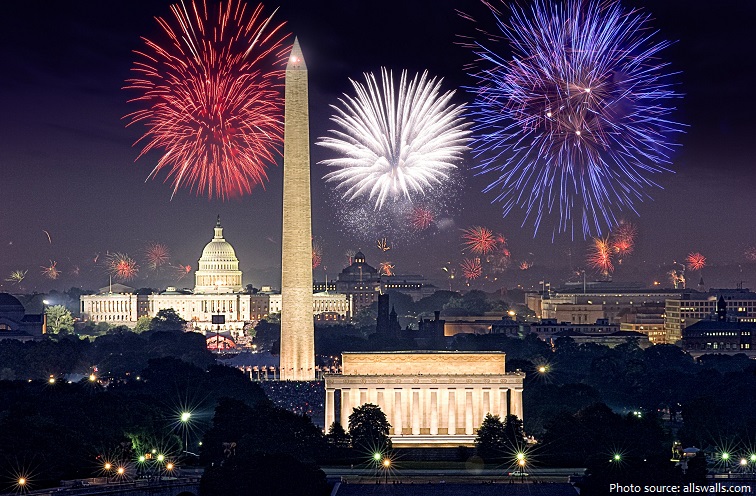
Fireworks can be quite complex and different types (rockets, Catherine wheels, and so on) work in different ways. Simply speaking, though, aerial fireworks (ones designed to fire up into the sky) have four parts. The container consists of pasted paper. The fuse allows the shell to reach the desired altitude before exploding. A bursting charge made of black powder is at the center of the shell. Stars (sparkler-like substances shaped into small spheres) are mixed throughout the interior of the shell.
The pattern that an aerial shell paints in the sky depends on the arrangement of star pellets inside the shell. For example, if the pellets are equally spaced in a circle, with black powder inside the circle, you will see an aerial display of smaller star explosions equally spaced in a circle.
Types of fireworks effects include Cake, Crossette, Chrysanthemum, Dahlia, Diadem, Fish, Horsetail, Kamuro, Mine, Palm, Peony, Ring, Spider, Time Rain, and Willow.
The Walt Disney Company is the largest consumer of fireworks in the world and the second largest purchaser of explosive devices, right behind the U.S. Department of Defense.
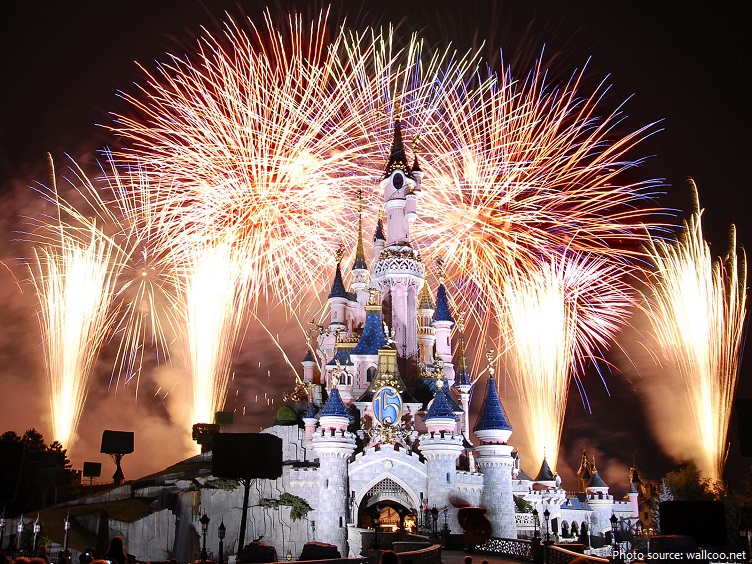
In 2004, Disneyland in California starting launching fireworks using compressed air rather than gunpowder. Electronic timers were used to explode the shells. That was the first time the launch system was used commercially, allowing for increased accuracy in timing (so shows could be put to music) and reducing smoke and fumes from big displays.
To this day, a deep, vibrant blue is still beyond reach, despite the fact that fireworks were invented more than a millennium ago. It’s the holy grail for pyrotechnic experts.
China is the largest manufacturer and exporter of fireworks in the world; 90% of all fireworks originate from there.
Enthusiasts in the United States have formed clubs which unite hobbyists and professionals. The groups provide safety instruction and organize meetings and private “shoots” at remote premises where members shoot commercial fireworks as well as fire pieces of their own manufacture.
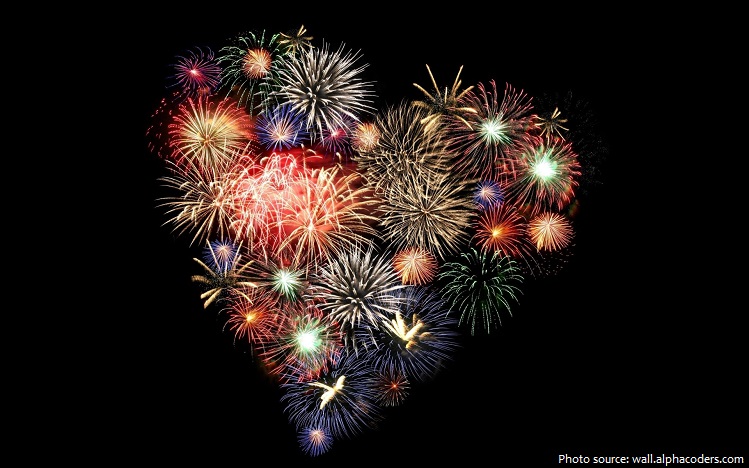
There is a World Fireworks Championship, where international teams compete to produce the best fireworks display.
The largest firework display consists of 810,904 fireworks and was achieved by Iglesia Ni Cristo (Church of Christ) (Philippines), at the Countdown to 2016 New Year Celebrations, in the Philippine Arena, Ciudad de Victoria Bocaue Bulacan, Philippines, on 1 January 2016.
The most firework rockets launched in 30 seconds is 125,801, in an attempt organised by Pyroworks International Inc. (Philippines), in Cebu, Philippines, on 8 May 2010. 16 stacks with 8,000 rockets in each were used for the attempt. All successful rockets were launched within 17 seconds.
Chinese people originally believed that the fireworks could expel evil spirits and bring about luck and happiness.
Kovtapyroergasoiphobia – is the fear of fireworks.
At the beginning of the 20th century, the Society for the Suppression of Unnecessary Noise campaigned against the use of fireworks. They helped create the first fireworks laws in the U.S.
Elvis Presley’s idea of an exciting game was that it should be as dangerous as possible, such as the game that involved fireworks. “Some of the Memphis Mafia would buy up to $15,000 worth of fireworks in today’s money, including skyrockets, baby giants, firecrackers, and … chasers, which moved rapidly and unpredictably until they exploded. Since the emphasis was on large and potentially lethal fireworks, everyone had to wear air force jump-suits plus gloves, helmets, and goggles.
Source: http://justfunfacts.com/interesting-facts-about-fireworks/




1 Comment
Very nice 👍 I enjoyed it